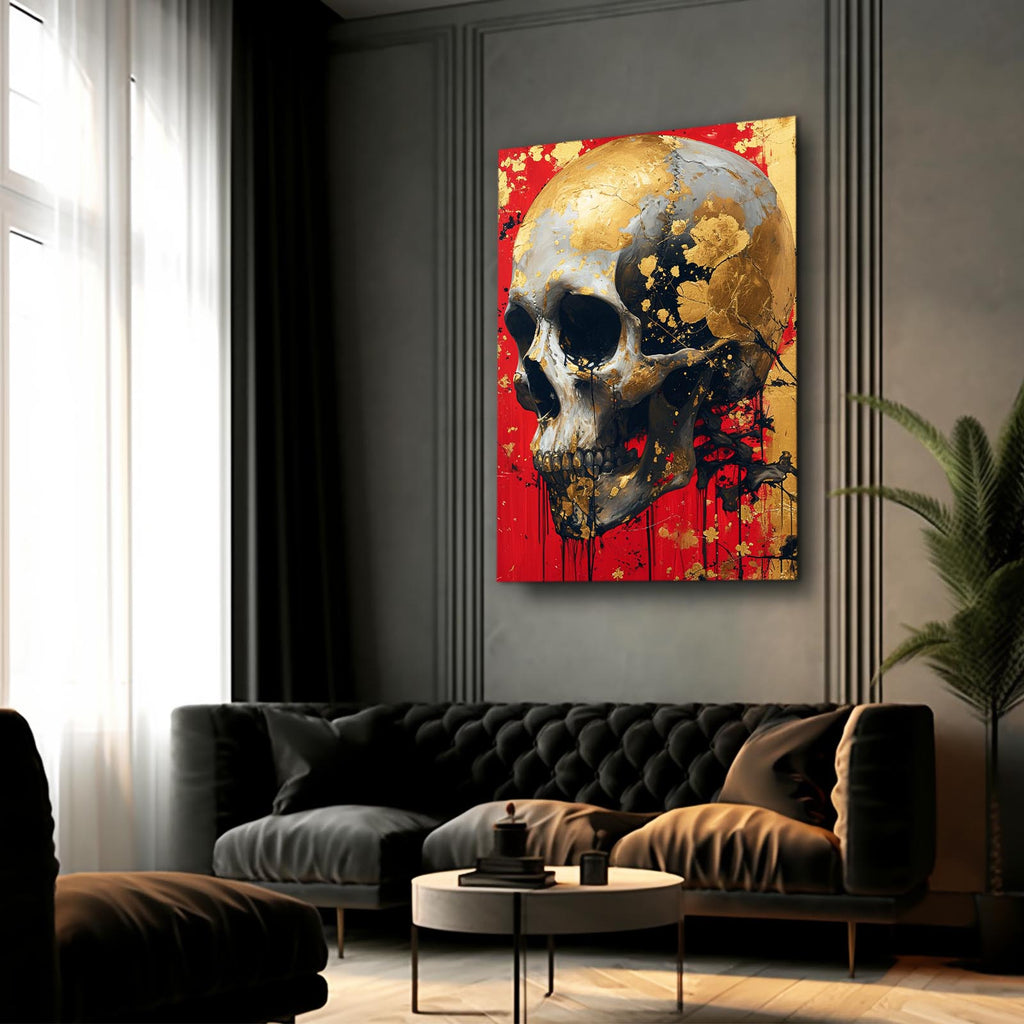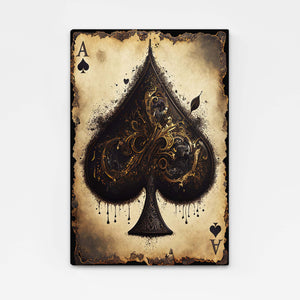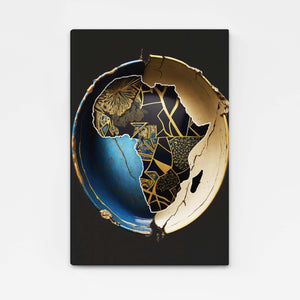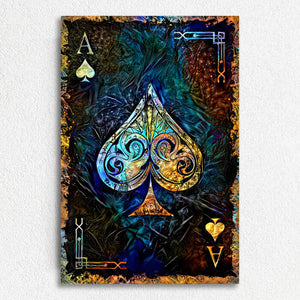What Does a Skull Symbolize in Art ?
Mar 06, 2024
Introduction
Throughout history, the skull has emerged as a powerful symbol in art, carrying deep meanings and evoking a wide range of emotions in viewers. From memento mori in the Middle Ages to contemporary fine art, the skull remains a popular subject, reminding us of our own mortality, the fleeting nature of life, and the universal human condition. This article delves into the multifaceted symbolism of skulls in art, exploring their historical significance and continued relevance today.
Human Skull Symbolism
The human skull symbolizes our shared journey towards the inevitable end. It is a reminder of our mortality, a universal symbol that crosses cultural boundaries. The skull encourages us to ponder the transient nature of our existence, urging us to appreciate the beauty of life and the moments we are given. This powerful symbol serves not only as a memento mori but also as a representation of equality, reminding us that death is the great leveler, indifferent to status or wealth.
The Beauty in Death: How Skulls Became a Timeless Subject in Art History
Skulls have been a captivating subject in art for centuries, embodying the beauty that can be found in death. This juxtaposition of life and death invites viewers to contemplate the fragility of human life and the inevitability of death. Artists have used skulls to explore themes of vanity, the fleeting nature of worldly pleasures, and the pursuit of meaning beyond the material world. Vanitas paintings, popular in the 17th century, are prime examples of this, incorporating skulls alongside other symbols like extinguished candles and wilting flowers to emphasize the temporary nature of life's pleasures.
To Show Change and Transformation
Beyond their reminder of mortality, skulls symbolize change and transformation. In many cultures, skulls represent the transition from one state of being to another, often seen in rituals and religious ceremonies. This symbolism is evident in the Mexican holiday Día de los Muertos, where sugar skulls are used to honor the dead, celebrating their lives and welcoming their spirits back to the world of the living for a brief visit. The skull, in this context, symbolizes the cycle of life and death, a natural process of transformation that affects all living beings.
The Symbolism of Skulls in Art
In the realm of art, skulls carry profound symbolism. They serve as a reminder to live life fully, knowing that it is finite. This has inspired artists throughout history to incorporate skulls into their work as a means of communicating with their audience about the human condition, the universality of death, and the importance of living a meaningful life. Artists like Hans Holbein and Charles Allan Gilbert have masterfully used skulls in their paintings to offer a deeper reflection on life, death, and the human experience.
Skulls in art also challenge viewers to confront their fears about death and the unknown. By presenting the skull in various contexts, artists encourage a dialogue with the viewer about the inevitability of death and the importance of accepting it as a part of life. This dialogue can lead to a greater appreciation for the present moment and inspire a more profound understanding of life's inherent beauty.
The Digital Renaissance of Skull Symbolism in Contemporary Art
In recent years, the fascination with skull symbolism has permeated the contemporary art world, with numerous artists exploring its rich and complex meanings in innovative ways. The internet has allowed for a broader dissemination and appreciation of skull art, making it accessible to a global audience. Museums, galleries, and online platforms offer diverse collections that showcase the skull's versatility as a subject in art. One such platform, Musa Art Gallery, features a compelling collection of skull art that spans a variety of styles and mediums. By visiting Musa Art Gallery's Skull Art Collection, art enthusiasts can explore contemporary interpretations of this timeless symbol, each artist providing their unique perspective on the themes of mortality, transformation, and the essence of human existence.
The Virtual Connection: Exploring Skull Art in the Age of the Internet
Furthermore, the digital age has revolutionized the way we interact with art, allowing for virtual experiences that connect audiences with artists and their creations from anywhere in the world. Online galleries like Musa Art Gallery not only facilitate this connection but also promote a deeper understanding and appreciation of the symbolism behind the art. Their skull art collection is a testament to the enduring relevance of the skull symbol in art, inviting viewers to engage with the works on a personal level. Whether as a stark reminder of mortality, a celebration of life, or a symbol of transformation, the skull continues to captivate and inspire artists and audiences alike, proving that its significance in art is more vibrant than ever.
Conclusion
The skull, with its deep roots in art history and its continued relevance in contemporary culture, stands as a potent symbol of our collective human experience. Its representation in art serves not only as a reminder of mortality but also as a profound commentary on the beauty of life, the inevitability of change, and the universality of the human condition. Artists, from the past to the present, have harnessed the skull's evocative power to explore themes that resonate on a deeply personal level, encouraging viewers to reflect on their own lives, values, and the transient nature of all things.
As we navigate the complexities of modern life, the symbolism of the skull in art remains more relevant than ever, offering a bridge between the past and present, the individual and the universal. It challenges us to confront our fears, embrace change, and celebrate the preciousness of the moment. The continued fascination with skull symbolism in the art world is a testament to its enduring appeal and the profound questions it raises about existence, beauty, and mortality.
Embark on your own exploration of the captivating world of skull art. Visit Musa Art Gallery's Skull Art Collection today, and discover the beauty, mystery, and profound symbolism that the skull continues to embody in the realm of art.
FAQ:
Q1: Why do artists use skulls in their artwork?
A1: Artists use skulls in their artwork to explore themes of mortality, transformation, and the fleeting nature of life. Skulls serve as a powerful reminder of our own mortality and encourage viewers to reflect on the beauty of life, the inevitability of death, and the universal human condition.
Q2: What does the skull symbolize in art?
A2: In art, the skull symbolizes several concepts, including mortality, change, transformation, and the transient nature of human existence. It also represents equality, reminding us that death is a universal experience that transcends social and economic differences.
Q3: How has the symbolism of skulls in art changed over time?
A3: While the core symbolism of skulls—mortality and the transient nature of life—has remained constant over time, the way artists represent and interpret skulls has evolved. From medieval memento mori to contemporary art, skulls have been used to express a range of themes, including vanity, the quest for meaning beyond material existence, and the celebration of life despite the knowledge of inevitable death.
Q4: Can you give examples of how skulls are used in different cultural contexts?
A4: Yes, in Mexican culture, sugar skulls are used during Día de los Muertos to honor and celebrate the lives of deceased loved ones. In Western art, skulls are often found in vanitas paintings of the 17th century, serving as a reminder of the vanity of worldly pleasures. Each cultural context gives the skull unique meanings related to life, death, and the afterlife.
Q5: Where can I see contemporary skull art?
A5: Contemporary skull art can be seen in museums, galleries, and online platforms that specialize in modern and contemporary art. Musa Art Gallery, for example, offers a diverse collection of skull art accessible through their website, showcasing the work of various artists who explore the symbolism of skulls in innovative ways.
Q6: How can I interpret skull symbolism in artwork?
A6: Interpreting skull symbolism in artwork involves considering the context in which the skull is presented, the other elements it is paired with, and the overall theme of the artwork. Understanding the artist's intention and the cultural background can also provide deeper insights into the symbolism of the skull in a specific piece of art.
Q7: Are there any online resources for learning more about skull symbolism in art?
A7: Yes, there are many online resources available for those interested in learning more about skull symbolism in art. Art history websites, academic journals, and digital art galleries offer articles, essays, and collections that delve into the significance of skulls in art across different cultures and historical periods.





















